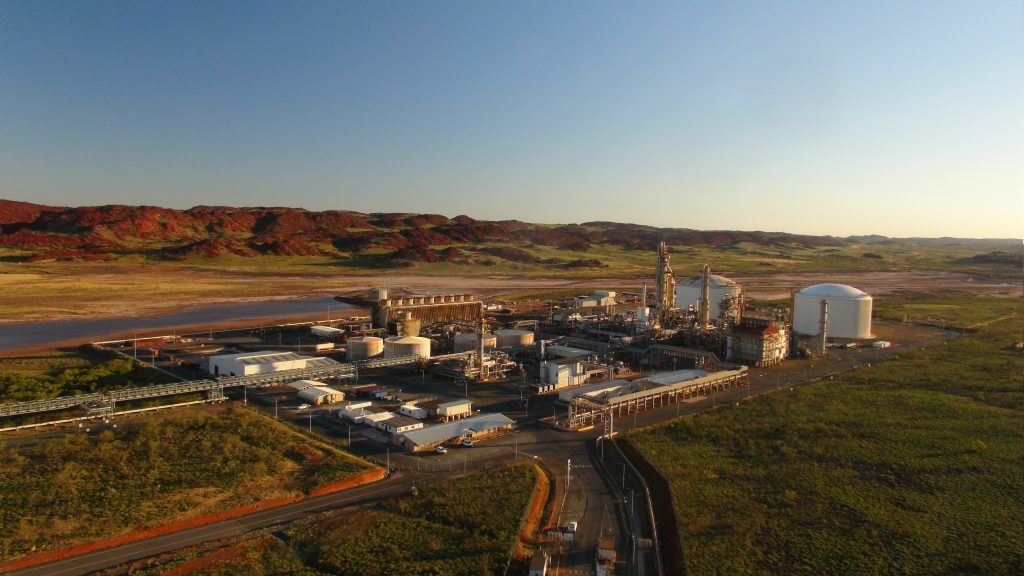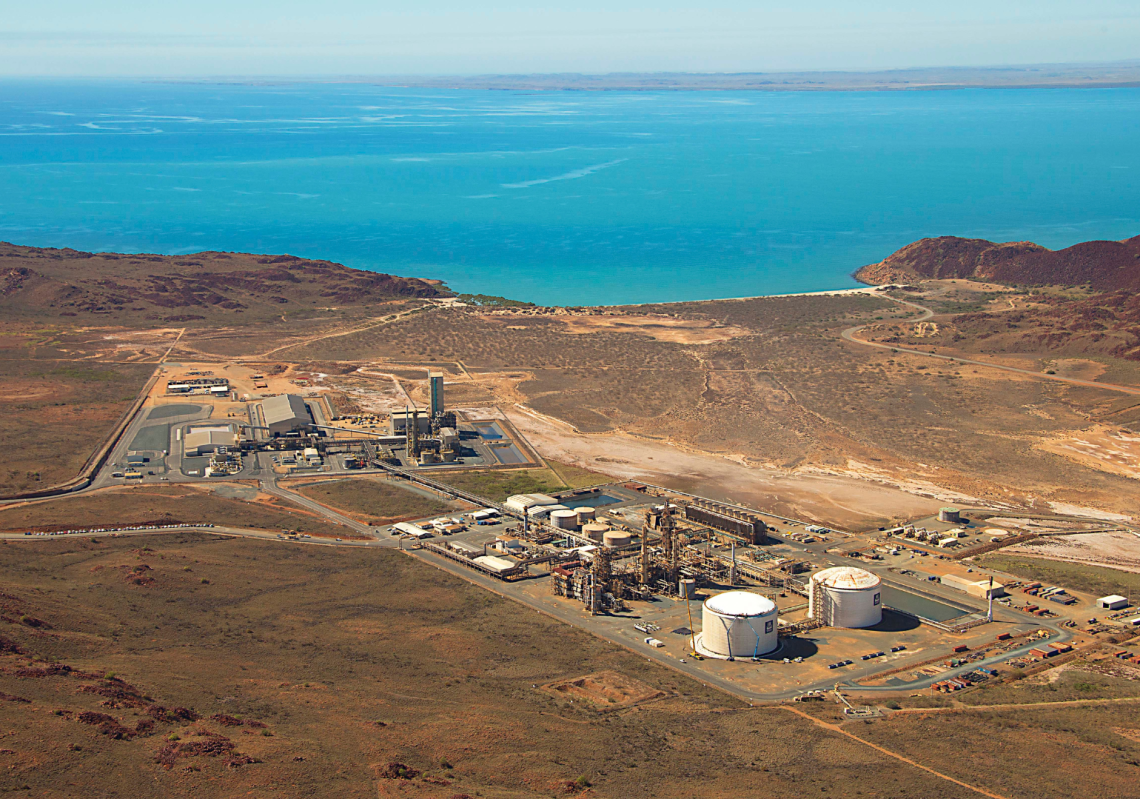A remote ammonia and hydrogen producer whose products feed around 250 million people worldwide is turning its hand to more sustainable products.
As one of the largest ammonia producers in the world, Yara is engaged in secondary and tertiary downstream processing.
Producing an average 840,000 t of ammonia and 330,000 t of ammonium nitrate annually, Yara makes up around five per cent of the global traded ammonia market that underpins the global fertiliser trade.
That’s a lot of heavy lifting for a relatively small workforce of around 250 people in the Pilbara region in northern Western Australia.
A feat of complex chemical engineering, Yara receives raw natural gas from a third party, which it then takes and turns into value-added end products such as fertilisers.
The first step of the chain is the reformation into hydrogen syngas which is ultimately cleaned of unwanted by-products, such as carbon dioxide and water, and converted into liquid ammonia, which is -33°C at ambient conditions.
Approximately 10 per cent of the ammonia produced is processed into nitric acid. This nitric acid is then processed with an additional 10 per cent ammonia to produce ammonium nitrate.
Reducing harmful emissions
For Wade Kimpton, Production Manager of Yara’s nitrates site, the job is “a chemical engineer’s dream”.
Setting out to solve the issue of undesirable by-products, Yara had to reckon with the fact that when ammonia is burned deliberately, it makes nitrogen oxides – NOx gases – such as nitrous oxide (N2O), a greenhouse gas equivalent to 265 times the amount of carbon dioxide.

“Yara invented an abatement technology called DeN2O catalyst 58-Y1 following extensive research,” Kimpton said.
“It selectively utilises the desirable NOx gases produced in the initial reaction phase to react with the undesirable N2O by-product, which is produced at the same time.”
This approach has an added advantage where any unreacted components from the primary reaction can also occur in the abatement catalyst, which increases the yield or conversion efficiency.
“Importantly, Yara has made this technology available via a catalyst vendor, which is now used globally by a wide range of manufacturers,” Kimpton said.
In short, the abatement technology reduces the level of N2O in the presence of a catalyst, which Kimpton described as a “double win – it drastically reduces emissions and gives you more production”.
Yara is also a significant player in the reduction of NOx from industrial plants via selective catalytic reduction (SCR) technology.
The catalyst is made from titanium, vanadium and tungsten. A vaporised reagent – ammonia or urea – is injected into flue gas and reacts with NOx on the SCR catalyst, resulting in nitrogen (N2) and water (H2O).
This increases the reaction efficiency but does not deteriorate during the process.
“To inject and distribute the reagent into the flue gas flow, we use an ammonia injection grid with patented designs that achieves very high mixing rates in a confined space,” Kimpton said.
The result is an almost full NOx conversion at minimum ammonia slip.
“With over 600 systems installed globally, [Yara’s] solutions are enabling the reduction of 200,000 t of NOx per year globally,” he said.
Producing green fuel
In addition to its ammonia and ammonium nitrate business, Yara is also building a renewable hydrogen plant with global energy company Engie to use the sheer amount of sunlight in its backyard.
When first floated in 2014, the concept was not cost-viable, but recent advancements mean that, in a few years, it expects to produce 18 MW worth of power.
“We’ll be able to generate electricity for our electrolysers, which will produce high-purity hydrogen gas,” Kimpton said.
“That hydrogen is then going to be compressed and added directly into the ammonia plant to produce green ammonia.”
Producing 1.6 million t of carbon dioxide per annum, the plant’s location is an advantage for developing carbon capture and storage (CCS). Around 15 to 20 per cent of the plant can be turned into green molecules, with the remaining 80 to 85 per cent requiring a different form of decarbonisation, in the form of CCS.
“We have green molecules coming in, traditional steam methane reforming, CCS opportunities, as well as further downstream processing producing technical grade ammonium nitrate servicing the mining industry,” Kimpton said.
Regional advantage
People in the regions know the challenge of attracting talent, but Kimpton said that there’s a lot more for engineers working out in the sticks than meets the eye.
Not enough professionals “know just how good the lifestyle in these regional areas can be,” he said.
There’s been a shift underway since COVID, and with the rising cost of living in the big cities, “and a lot of people are now seeing it as far more attractive to live and work in regional areas”.
Kimpton believes that, given the complexity of its processes and investment in the newest and best technologies, Yara is an “absolute Australian success story” when it comes to manufacturing, training and developing engineers.



